Finding Your Perfect Feline: An Ultimate Guide to Cat Breeds
Choosing the perfect feline companion is an exciting yet overwhelming journey. With so many cat breeds to explore, how do you know which one suits your home and lifestyle best? Whether you’re looking for a playful and energetic buddy, a cuddly lap cat, or a low-maintenance companion, finding the right one is essential for a happy and harmonious relationship.
Cats come in all shapes, sizes, and personalities—some breeds are naturally affectionate, while others are more independent. Ever wondered, “What is the nicest cat breed?” or “Which cat is best for home?” These are common questions among first-time and experienced cat owners alike. The answer depends on several factors, including your living space, activity level, and personal preferences.
In this ultimate guide, we’ll take you through a list of cat breeds, from the most popular to rare and exotic ones. You’ll discover their unique traits, care needs, and which ones align best with your lifestyle. Whether you’re searching for a loyal lap cat or an adventurous explorer, this handbook will help you make an informed decision—because choosing the right cat isn’t just about looks; it’s about finding a lifelong friend.
Let’s dive in and explore the wonderful world of cat breeds!
Check Out: The Ultimate Dog Breed Handbook
Table of Contents
ToggleUnderstanding Cat Breeds
Cats are as diverse as the people who love them. From playful and energetic to calm and affectionate, each breed has its own personality, care needs, and quirks. But with so many options, how do you decide which one is the best fit for your home?
Why Choosing the Right Cat Breed Matters
Bringing a cat into your life is a long-term commitment, and selecting the right breed can make all the difference. Some cats thrive in active households, while others prefer a quiet, low-maintenance lifestyle. Before making your decision, consider these key factors:
- Personality & Temperament: Do you want a social butterfly or an independent companion?
- Activity Level: Some breeds need constant playtime, while others are more laid-back.
- Grooming Needs: Long-haired cats require regular brushing, while short-haired breeds are easier to maintain.
- Space Requirements: Apartment dwellers may prefer a low-energy breed, while larger homes can accommodate more active cats.
Purebred vs. Mixed Breeds: What’s the Difference?
One of the first decisions you’ll face is whether to adopt a purebred or mixed-breed cat. Each has its own advantages:
- Purebred Cats: If you’re looking for specific traits—such as the affectionate nature of a Ragdoll or the intelligence of a Siamese—a purebred might be the right choice. These cats come with predictable personalities, but some breeds have inherited health issues to be aware of.
- Mixed-Breed Cats: Often found in shelters, mixed-breed cats can have a blend of unique traits from different lineages. They are generally healthy, adaptable, and make wonderful companions.
Finding the Perfect Fit for Your Lifestyle
So, which cat is best for home? The answer depends on your environment and daily routine:
- For families with kids: Consider friendly and patient breeds like the Maine Coon or Ragdoll.
- For busy professionals: Low-maintenance breeds like the British Shorthair or Russian Blue are ideal.
- For allergy sufferers: Some breeds, like the Balinese or Siberian, are known to be more hypoallergenic.
- For apartment living: Calm and adaptable breeds like the Scottish Fold or Exotic Shorthair are great choices.
By understanding the types of cat breeds and what makes each one unique, you can confidently choose a feline friend who will fit seamlessly into your life.
Next, let’s dive into some of the most popular cat breeds and what makes them special!
Popular Cat Breeds and Their Unique Traits
Now, let’s explore the most popular cat breeds so you can find your perfect match.
1. Affectionate and Social Breeds
If you’re searching for a cuddly, people-loving feline, these breeds are known for their affectionate personalities:
- Ragdoll: True to their name, Ragdolls go limp in your arms and love snuggling. They thrive on human companionship and are perfect for families.
- Siamese: Talkative and outgoing, Siamese cats enjoy interacting with their owners and following them around the house.
- Maine Coon: One of the most popular cat breeds, Maine Coons are gentle giants known for their friendly, dog-like loyalty.
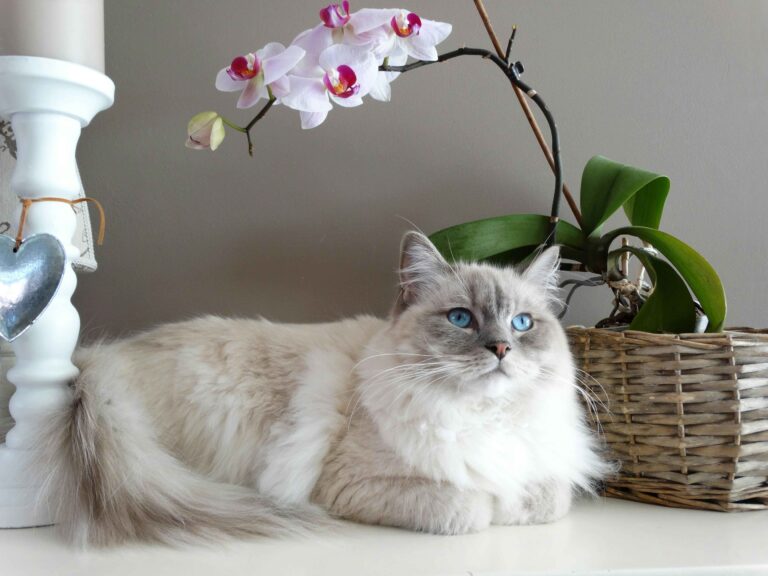
2. Independent and Low-Maintenance Breeds
Prefer a cat that doesn’t demand constant attention? These breeds are easygoing and require minimal grooming:
- British Shorthair: Calm, undemanding, and incredibly cute with their round faces and plush coats.
- Russian Blue: A reserved yet loving breed that bonds closely with its owner but enjoys solitude as well.
- Scottish Fold: Famous for their folded ears and relaxed personalities, these cats adapt well to different living situations.
3. Playful and Energetic Breeds
If you want a cat that loves to play and stay active, these high-energy breeds might be for you:
- Bengal: With their wild, leopard-like appearance, Bengals are incredibly intelligent and require lots of playtime.
- Abyssinian: Often described as the “athlete of the cat world,” Abyssinians love climbing, exploring, and engaging with their humans.
- Oriental Shorthair: A curious and lively breed that enjoys interactive toys and puzzle games.
4. Rare and Exotic Breeds
For those interested in unique and rare types of cat breeds, here are a few that stand out:
- Savannah: A stunning hybrid of a domestic cat and a wild African serval, Savannahs are adventurous and highly active.
- Turkish Van: Known for their love of water, Turkish Vans are playful, intelligent, and have striking white-and-red coats.
- LaPerm: With their naturally curly fur, LaPerms are a rare and affectionate breed that enjoys human attention.
- Lykoi (Werewolf Cat) – This rare breed has a distinctive, patchy coat that gives it a wild appearance.
- Toyger – Bred to resemble a miniature tiger, Toygers are playful and affectionate.
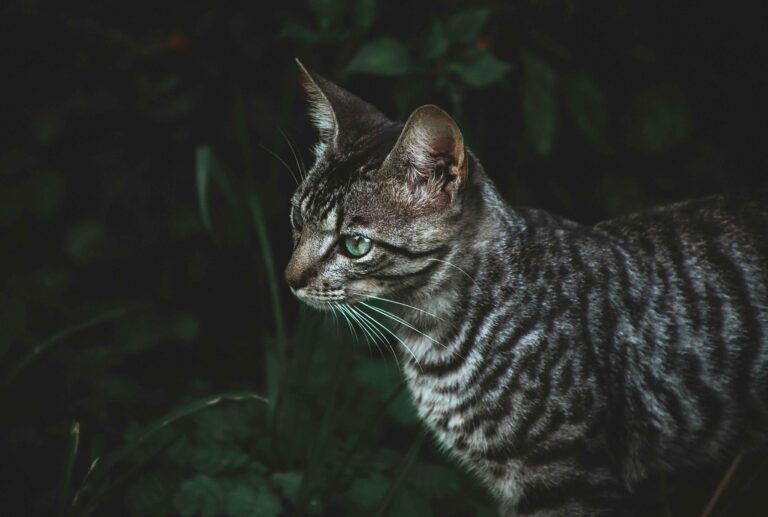
Choosing the Right Breed for You
When exploring a list of cat breeds, it’s important to think about your lifestyle, home environment, and how much time you can dedicate to your furry friend. Whether you want a social butterfly, a low-maintenance companion, or a rare feline beauty, there’s a perfect breed out there for you.
Next, let’s look at what it takes to care for different cat breeds, from grooming to exercise needs!
Cat Breed Care and Maintenance
Once you’ve chosen the perfect cat, it’s important to understand their specific care needs. Different types of cat breeds require varying levels of grooming, exercise, and attention. Whether you have a long-haired beauty or a playful short-haired companion, proper care ensures a happy, healthy life for your feline friend
1. Grooming Needs: Long-Haired vs. Short-Haired Breeds
Grooming isn’t just about keeping your cat looking good—it also prevents matting, hairballs, and skin issues.
Long-Haired Breeds (e.g., Maine Coon, Persian, Ragdoll)
- Require daily brushing to prevent tangles and mats.
- More prone to shedding, so regular grooming reduces excess fur in your home.
- Occasional baths may be needed to keep their coats clean and silky.
Short-Haired Breeds (e.g., British Shorthair, Russian Blue, Siamese)
- Need minimal grooming—brushing once or twice a week is usually enough.
- Shed less frequently, making them easier to maintain.
- Self-grooming is more effective in short-haired cats, but occasional assistance helps.
2. Dietary Considerations for Different Breeds
Not all cats have the same dietary needs. Some cat breeds have unique nutritional requirements:
High-Energy Breeds (e.g., Bengal, Abyssinian)
- Require a protein-rich diet to support their active lifestyles.
- Wet food or raw diets can be beneficial for maintaining muscle health.
Large Breeds (e.g., Maine Coon, Norwegian Forest Cat)
- Need joint-supporting nutrients like glucosamine for their larger frames.
- Controlled portion sizes prevent weight-related health issues.
Persian & Flat-Faced Breeds
- May require specially shaped kibble to accommodate their facial structure.
- Easily prone to obesity, so portion control is key.
3. Exercise and Playtime Requirements
Every cat needs mental and physical stimulation, but some require more than others:
Highly Active Cats (e.g., Savannah, Siamese, Bengal)
- Love interactive toys, puzzle feeders, and climbing trees.
- Need daily play sessions to prevent boredom and destructive behavior.
Laid-Back Breeds (e.g., Ragdoll, British Shorthair)
- Enjoy lounging but still need regular light exercise.
- Prefer calm play, such as gentle toy chasing or interactive treat dispensers.
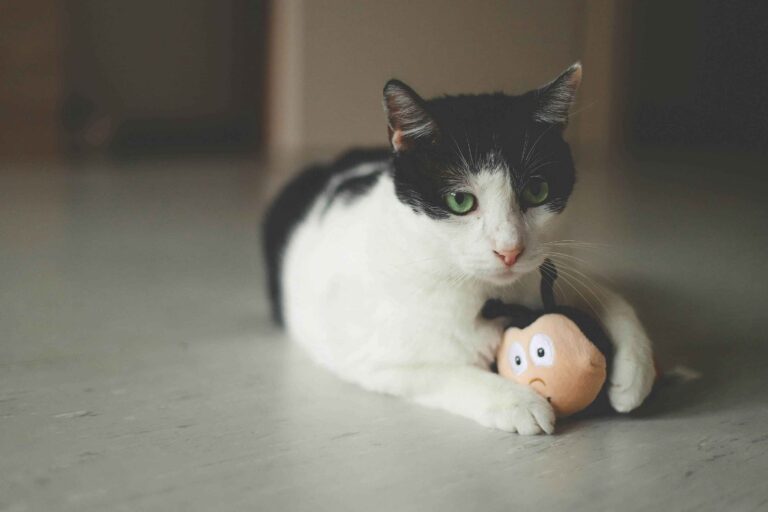
4. Common Health Concerns in Different Breeds
Certain breeds are more prone to specific health conditions. Understanding these risks can help you take preventive measures.
- Persians & Exotic Shorthairs: Prone to respiratory issues due to their flat faces.
- Maine Coons & Ragdolls: Higher risk of hypertrophic cardiomyopathy (a common heart disease).
- Sphynx & Hairless Breeds: Require regular skin care to prevent oil buildup and sunburn.
A Happy, Healthy Cat Starts with Proper Care
By understanding the care needs of different types of cat breeds, you can ensure your feline friend thrives. From grooming routines to diet and exercise, every detail contributes to their overall well-being.
Next, we’ll help you determine which cat breed best suits your lifestyle—whether you live in a small apartment, have children, or need a hypoallergenic option!
Matching a Cat Breed to Your Lifestyle
Let’s explore the best options based on common living arrangements and needs.
1. Best Breeds for Families with Kids
If you have young children, you’ll want a friendly, patient, and playful cat that can handle the energy of a household with little ones.
- Maine Coon: One of the most popular cat breeds, these gentle giants are affectionate, sturdy, and great with kids.
- Ragdoll: Known for their laid-back nature, Ragdolls love being handled and will happily follow children around.
- Birman: Playful yet gentle, Birmans form strong bonds with family members and enjoy interactive play.
2. Ideal Cats for Apartment Dwellers
Living in a small space? Some breeds adapt better to apartment life, requiring less space and lower activity levels.
- British Shorthair: Low-energy and independent, British Shorthairs are content lounging in a quiet home.
- Scottish Fold: With their calm demeanor and love for cozy corners, Scottish Folds make excellent apartment pets.
- Russian Blue: Quiet and reserved, this breed enjoys peaceful environments and doesn’t demand constant attention.
Low-Allergy Options for Allergy Sufferers
If you or a family member has cat allergies but still want a feline friend, consider breeds with lower allergen levels.
- Balinese: Often called the “hypoallergenic Siamese,” Balinese cats produce lower amounts of the allergenic protein Fel d 1.
- Siberian: Surprisingly, despite their thick coats, Siberians have lower allergen levels than many short-haired breeds.
- Oriental Shorthairs: Their short, fine coats produce fewer allergens, making them a better option for mild allergy sufferers.
4. Best Companion Cats for Seniors
For older adults or retirees looking for a loving and low-maintenance companion, these breeds are ideal:
- Persian: Calm, affectionate, and happiest when curled up on a lap, Persians are wonderful companions for relaxed households.
- Exotic Shorthair: A lower-maintenance alternative to the Persian, Exotic Shorthairs are just as loving but require less grooming.
- Ragdoll: Their affectionate, docile nature makes them perfect for seniors seeking a loyal, gentle companion.
So, which cat is best for your home?
Next, let’s explore where to find your ideal feline companion—should you adopt or buy from a breeder? We’ll guide you through the process!
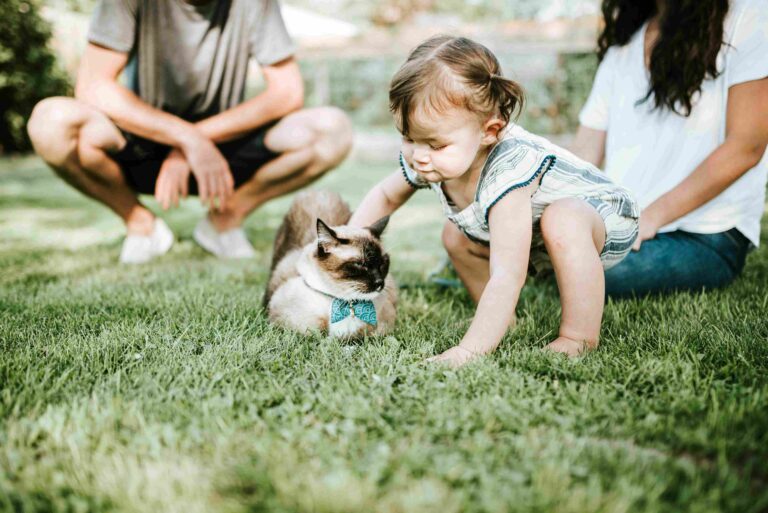
Where to Find Your Perfect Cat: Adoption vs. Breeders
Once you’ve decided on the ideal breed, the next big question is—where do you find your new feline companion? Should you adopt from a shelter or go through a breeder? Each option has its advantages, and understanding them will help you make an informed and responsible decision.
Adopting from a Shelter or Rescue
Adoption is a wonderful way to give a cat a second chance at a loving home. Many shelters and rescue organizations have a variety of cat breeds, from purebreds to mixed-breed companions.
Why Choose Adoption?
- Save a Life: Many cats in shelters are looking for a forever home, and adoption helps reduce overcrowding.
- Lower Cost: Adoption fees are generally more affordable than purchasing from a breeder and often include vaccinations and spaying/neutering.
- Mixed Breeds with Unique Traits: Many shelter cats are mixed breeds, combining the best qualities of multiple breeds.
If you’re searching for a specific breed, some rescues specialize in rehoming purebred cats. It may take patience, but adopting a popular cat breed like a Ragdoll or Siamese is possible through breed-specific rescues.
Buying from a Responsible Breeder
If you have your heart set on a particular breed and want to raise a kitten from an early age, purchasing from a reputable breeder may be the best choice.
What to Look for in a Breeder:
- Health Screening: Ethical breeders test for genetic conditions common in certain breeds, such as heart disease in Maine Coons or respiratory issues in Persians.
- Proper Socialization: Kittens should be raised in a home environment, not in cages, ensuring they’re well-adjusted and socialized.
- Transparency: A good breeder will allow you to visit their cattery, meet the kitten’s parents, and provide health records.
Be cautious of backyard breeders and kitten mills, which prioritize profit over the well-being of the animals. Always research and ask questions before purchasing.
Pet Stores: Proceed with Caution
While some pet stores partner with local rescues to adopt cats, others source kittens from unethical breeders. If you’re considering getting a cat from a pet store, ensure they have ethical sourcing practices and provide complete health records.
Online Listings: A Risky Option
Websites and social media often feature kittens for sale, but these can be risky sources. Scammers, unlicensed breeders, and unethical sellers often use online platforms. If you go this route, verify the seller’s credentials, ask for vet records, and always meet in person before making a decision.
Making the Right Choice for You
Bringing a cat into your home is a lifelong commitment, so choosing a responsible source ensures a happy, healthy start to your journey together. Whether you adopt a loving rescue cat or purchase from a responsible breeder, taking the time to research and prepare will lead to a rewarding and lifelong companionship.
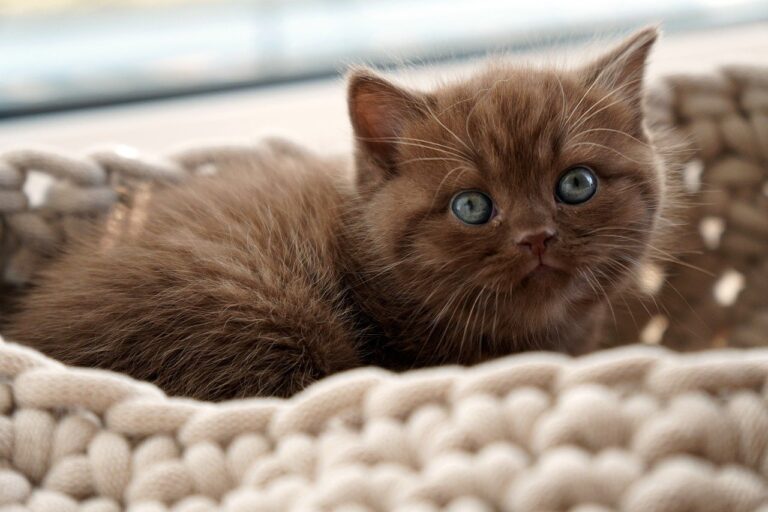
Final Thoughts: Finding the Perfect Feline Friend
Choosing the right cat is an exciting journey, and with so many types of cat breeds to explore, there’s a perfect match for everyone. Whether you’re drawn to the affectionate nature of a Ragdoll, the playful energy of a Bengal, or the gentle independence of a British Shorthair, understanding each breed’s personality and care needs is key to a happy companionship.
We’ve covered everything from the most popular cat breeds to their grooming, diet, and exercise requirements. We also explored which breeds suit different lifestyles—whether you live in a bustling household, a quiet apartment, or need a hypoallergenic pet. And when it comes to bringing your new cat home, knowing where to adopt or find a responsible breeder ensures a healthy and ethical choice.
Now that you know the key factors in choosing the right breed, which feline personality best fits your home and lifestyle? Let us know in the comments, and share your experience with fellow cat lovers!
Happy Pet Parenting!